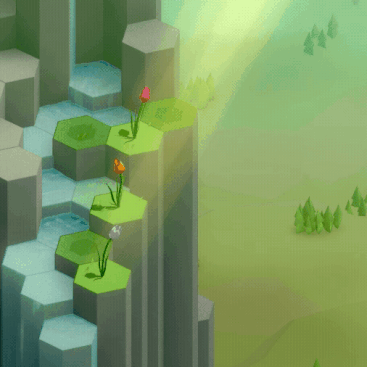Last March, I was invited to share my research on games and natural heritage at a seminar in Metz, France (CREM laboratory, Séminaire Passages, Pixel, Praxitèle, 15/3/22). One of the topics I presented was the criteria I use now to analyze natural heritage in a video game, whether it is a big-budget game (AAA), an independent game, or one of my own.
- Nature conservation / natural heritage is a theme in the game
- The game creators researched nature or ask knowledgeable advisors during their creation process
- Visual accuracy (doesn’t have to be photorealism, but the player can recognize a natural element after seeing it in the video game. The animations also matter).
- Correct behavior (a plant grows and dies, requires water, etc.)
- Appropriate and non-destructive/capitalist gameplay (the player can interact with natural elements, not only by destroying everything or amassing/owning them)
- Educational content (the player can learn about the natural elements, like plants’ name, family, component, how to grow them, their use and properties, etc.)
These criteria can be used to analyze the intent (if it is possible to do a poïetic of the game, by interviewing the author, studying game design documents, documentation used by the project, etc.), the game as an object, and/or the reception, as there can always be a huge difference between those.
I came up with these criteria over the years, looking at what was missing and what was achieved in both my games and other games about nature. These criteria are always evolving, and so far no game I know checked all the boxes. It is not a problem or even a goal to achieve as these criteria must really be understood as a tool to analyze a game or be mindful of nature when creating one.
Example: Analyzing Caesar III (Impressions Games, 1998)
Caesar III is an old management game where you got to build a roman city on a specific map, take care of your citizen’s happiness, defend or attack your enemies and achieve several goals. One part of the gameplay is about the food industry: you build farms on appropriate land, transform and store the food, sell it through the market, and make sure you have enough workers to keep the industry running. The game is old, but you can still buy it easily, as it use to be rather popular, and watch some playthroughs if you want to know more about it (for instance, the playthrough from GamerZakh)
Analyzing natural heritage in Caesar III as an object:
- Nature conservation / natural heritage is a theme in the game: no
- The game creators researched nature or ask knowledgeable advisors during their creation process: I couldn’t tell, as I didn’t do proper poïetic research on this game. From just looking at the game, at the very least the game creators researched the type of culture which were common in the roman empire.
- Visual accuracy: the plants are more symbols of plants than actual plants themselves, and so is the livestock. We can see some of the plants grow in an unrealistic way. The visual accuracy wouldn’t help the player recognize one of the plants in the wild if she doesn’t know it beforehand. There is also non-gameplay nature, which mostly backgrounds visual, but also elements limiting the player (rocks, rivers) or that he could destroy. Water is also represented. Wildlife is almost absent.
- Appropriate and non-destructive/capitalist gameplay: no. The gameplay is purely industrial. Nature is to be exploited by humans to its fullest. In addition to farming, you need to destroy trees to build for instance. The water system is interesting but focuses on human consumption.
- Educational content: it is possible to learn what plants were popular as food and luxuries during the roman empire.












